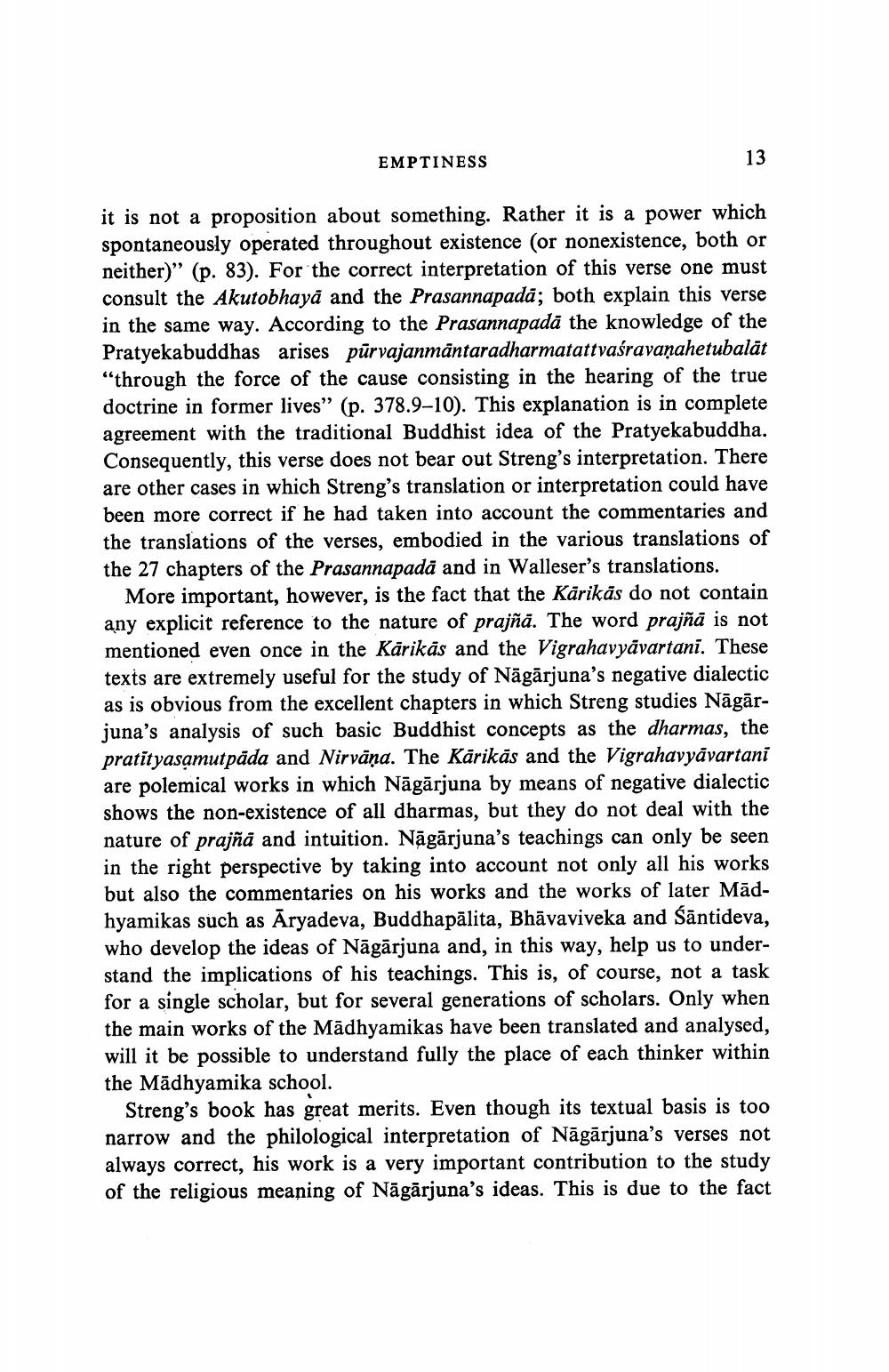Book Title: Emptiness Author(s): J W De Jong Publisher: J W De Jong View full book textPage 7
________________ EMPTINESS 13 it is not a proposition about something. Rather it is a power which spontaneously operated throughout existence (or nonexistence, both or neither)" (p. 83). For the correct interpretation of this verse one must consult the Akutobhaya and the Prasannapada; both explain this verse in the same way. According to the Prasannapadā the knowledge of the Pratyekabuddhas arises pūrvajanmāntaradharmatattvaśravanahetubalāt “through the force of the cause consisting in the hearing of the true doctrine in former lives” (p. 378.9-10). This explanation is in complete agreement with the traditional Buddhist idea of the Pratyekabuddha. Consequently, this verse does not bear out Streng's interpretation. There are other cases in which Streng's translation or interpretation could have been more correct if he had taken into account the commentaries and the translations of the verses, embodied in the various translations of the 27 chapters of the Prasannapada and in Walleser's translations. More important, however, is the fact that the Karikās do not contain any explicit reference to the nature of prajñā. The word prajñā is not mentioned even once in the Kārikās and the Vigrahavyāvartani. These texts are extremely useful for the study of Nāgārjuna's negative dialectic as is obvious from the excellent chapters in which Streng studies Nāgārjuna's analysis of such basic Buddhist concepts as the dharmas, the pratityasamutpada and Nirvana. The Karikas and the Vigrahavyávartani are polemical works in which Nāgārjuna by means of negative dialectic shows the non-existence of all dharmas, but they do not deal with the nature of prajña and intuition. Nāgārjuna's teachings can only be seen in the right perspective by taking into account not only all his works but also the commentaries on his works and the works of later Mādhyamikas such as Āryadeva, Buddhapālita, Bhāvaviveka and Säntideva, who develop the ideas of Nāgārjuna and, in this way, help us to understand the implications of his teachings. This is, of course, not a task for a single scholar, but for several generations of scholars. Only when the main works of the Madhyamikas have been translated and analysed, will it be possible to understand fully the place of each thinker within the Mādhyamika school. Streng's book has great merits. Even though its textual basis is too narrow and the philological interpretation of Nāgārjuna's verses not always correct, his work is a very important contribution to the study of the religious meaning of Nāgārjuna's ideas. This is due to the factPage Navigation
1 ... 5 6 7 8 9
